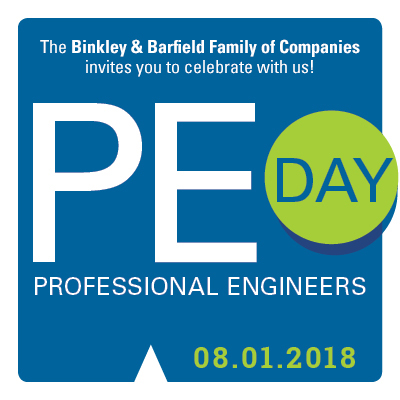Wednesday, August 1 marks the third annual Professional Engineers Day hosted by the National Society of Professional Engineers (NSPE), but did you know that the first professional engineer was licensed over a century ago? The first professional engineering license was issued to Charles Bellamy on August 8, 1907. According to NSPE’s site, National PE day is a yearly event created to raise awareness of what it means to be a PE, to recognize licensed PEs, and to show appreciation for the work they do each and every day.
What does it mean to be a licensed PE? For relationships with employers and clients, it means an increased level of trust in one’s competence to take on higher levels of responsibility. It is proof of hard work and dedication, and one of the highest levels of professionalism.
To become a licensed PE, engineers must complete all of the following:
- Complete four-year degree
- Work under a Professional Engineer for at least four years
- Pass two intensive competency exams and earn a license from the state licensure board
- Continually maintain and improve skills by participating in continuing education throughout the course of their careers
In addition, only licensed PEs are authorized to prepare, sign and seal, and submit engineering plans and drawings to a public authority for approval, or seal engineering work for public and private clients. Many states require teachers of engineering to be licensed professional engineers. Also, many federal, state, and municipal agencies will only consider licensed professional engineers to fill their higher-level positions.
For more information about what it takes to be a PE, or for more information about National Professional Engineers Day, visit: https://www.nspe.org/resources/professional-engineers-day
